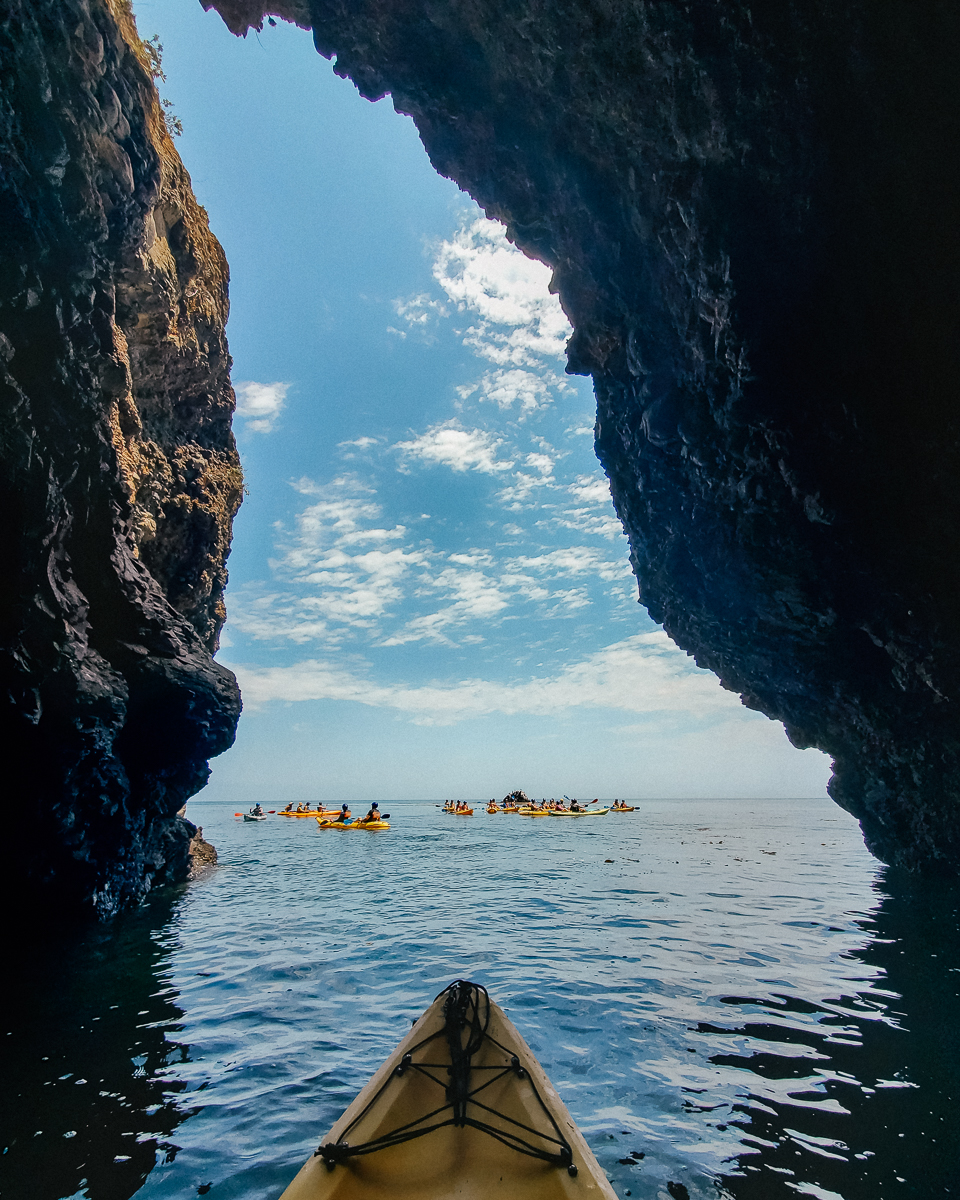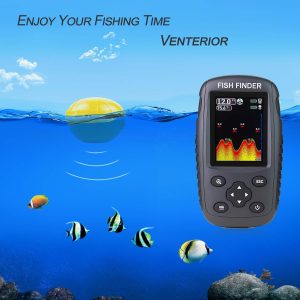Contents
Are you ready to embark on the ultimate adventure? In “Exploring the Ocean: The Ultimate Kayak Adventure”, you have the incredible opportunity to immerse yourself in the vastness of the ocean. With just a kayak and a paddle, you can experience the thrill and wonder of exploring the mysterious depths of the sea. From breathtaking marine life to stunning underwater landscapes, this ocean kayak caper promises an unparalleled adventure that will leave you in awe of the beauty that lies beneath the surface. So grab your life jacket, hop in your kayak, and get ready to embark on a journey like no other.
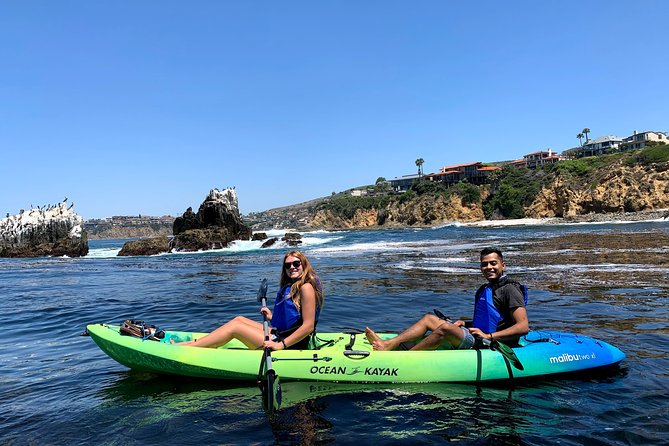
Choosing the Right Kayak
When it comes to choosing the right kayak for your ocean adventures, there are several factors to consider. Firstly, you need to think about your skill level and experience. If you are a beginner, it is advisable to start with a stable and easy-to-handle kayak. On the other hand, if you are an experienced kayaker, you may opt for a more maneuverable and advanced model.
Another important factor to consider is the type of kayak. There are several types of kayaks available, each with its own set of advantages and disadvantages. Sit-on-top kayaks are great for their stability and easy access, making them ideal for beginners and recreational kayakers. Sit-inside kayaks, on the other hand, provide better protection against the elements and are often used by more experienced kayakers.
In addition to the type of kayak, it is essential to consider the features that will enhance your experience. Some key features to look for include a comfortable seat and backrest, ample storage space for gear and equipment, and adjustable footrests for proper paddling technique. Additionally, consider the weight and length of the kayak, as these factors can impact stability and maneuverability.
Essential Gear for Ocean Kayaking
Before embarking on your ocean kayaking adventure, it is crucial to have the right gear to ensure your safety and enjoyment. Personal protective equipment should be at the top of your list. This includes a well-fitted personal flotation device (PFD) or life jacket, as well as a helmet for added protection in rough waters or rocky areas.
Navigation and communication tools are also vital for ocean kayaking. A compass and GPS can help you stay on course and navigate safely, especially when visibility is limited. It is also advisable to have a whistle or marine radio for communication in case of emergencies or to signal for help.
Safety and emergency equipment are essential for any ocean kayaker. This includes a bilge pump or sponge to remove any water that may enter your kayak, a towline in case you need assistance, and a first aid kit for any minor injuries that may occur. Additionally, carrying a waterproof flashlight and a signaling device such as a flare can greatly improve your safety during unexpected situations.
For longer trips, there is extra equipment that you should consider bringing along. This may include a marine-grade waterproof tent, a sleeping bag, and camping stove for overnight stays. It is also wise to pack extra food, water, and clothing to ensure you are prepared for any unforeseen circumstances.
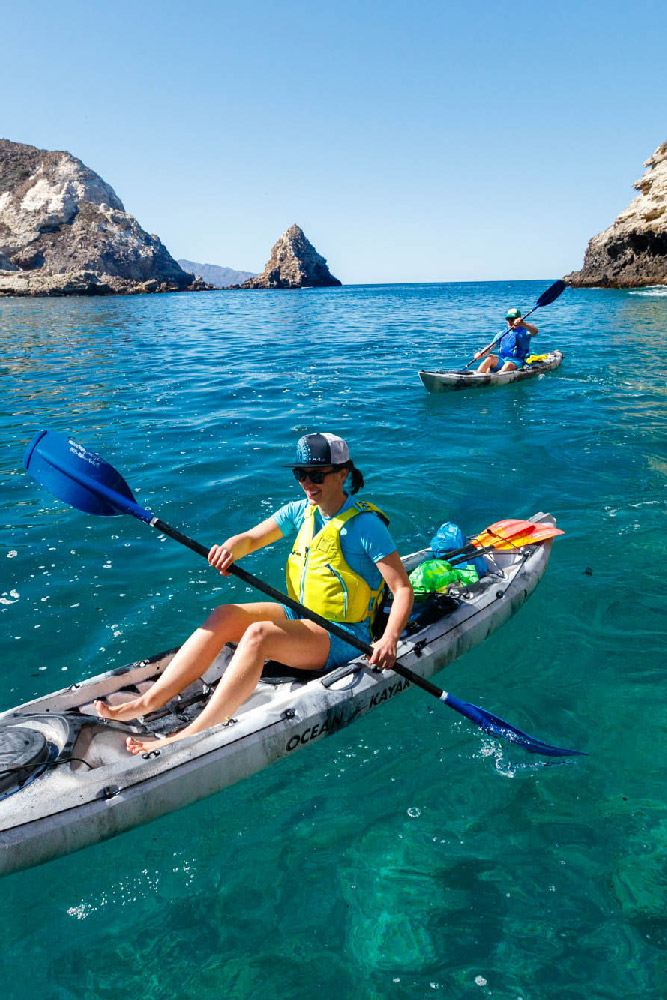
Preparing for the Ultimate Kayak Adventure
Preparing for the ultimate kayak adventure involves several key considerations. Firstly, physical fitness is important as kayaking can be physically demanding, especially in ocean conditions. Engaging in regular exercise and building up your strength and endurance will help you enjoy your adventure to the fullest.
Knowledge and skills are also essential for a successful kayak adventure. Familiarize yourself with basic kayaking techniques, such as paddling strokes and self-rescue methods. Taking some kayaking lessons or joining a local kayaking club can provide invaluable guidance and practice.
Planning the route is another crucial aspect of preparing for your adventure. Research the area you will be kayaking in, including potential hazards, points of interest, and emergency resources. Plotting your route on a map and sharing it with a trusted friend or family member is a smart safety measure.
Checking weather and tides is a fundamental step in ensuring a safe and enjoyable kayak adventure. Keep an eye on weather forecasts and tide charts, as unfavorable conditions can pose serious risks. Plan your kayaking trip accordingly, taking into account wind speeds, wave heights, and the direction of currents.
If necessary, obtain permits or permissions before embarking on your kayak adventure. Some areas may require a permit for kayakers, especially if you plan to visit protected marine reserves or restricted zones. Research the regulations and guidelines for your chosen location and ensure you comply with any necessary requirements.
Navigating the Ocean
Navigating the ocean can be an exciting yet challenging aspect of kayaking. Understanding currents and tides is crucial for planning your route and avoiding challenging conditions. Learn how to read tide tables and current charts to make informed decisions about when and where to paddle.
Using a compass and GPS will greatly assist you in navigating the ocean. A compass provides a reliable directional reference, while a GPS can provide precise coordinates and help you stay on course. Familiarize yourself with these tools and practice their use before setting out on your kayak adventure.
There are various navigation techniques that can help you stay on track during your ocean kayaking adventure. Dead reckoning is one such technique, which involves estimating your position based on your previous known location and factors such as speed, time, and direction of travel. Landmarks and visible features can also serve as useful navigational aids.
Dealing with uncertain conditions is an inevitable part of ocean kayaking. Rapid weather changes, unexpected swells, or foggy conditions can make navigation challenging. In such situations, it is crucial to stay calm and exercise caution. Consider reducing your speed, adjusting your course, or seeking shelter until conditions improve.
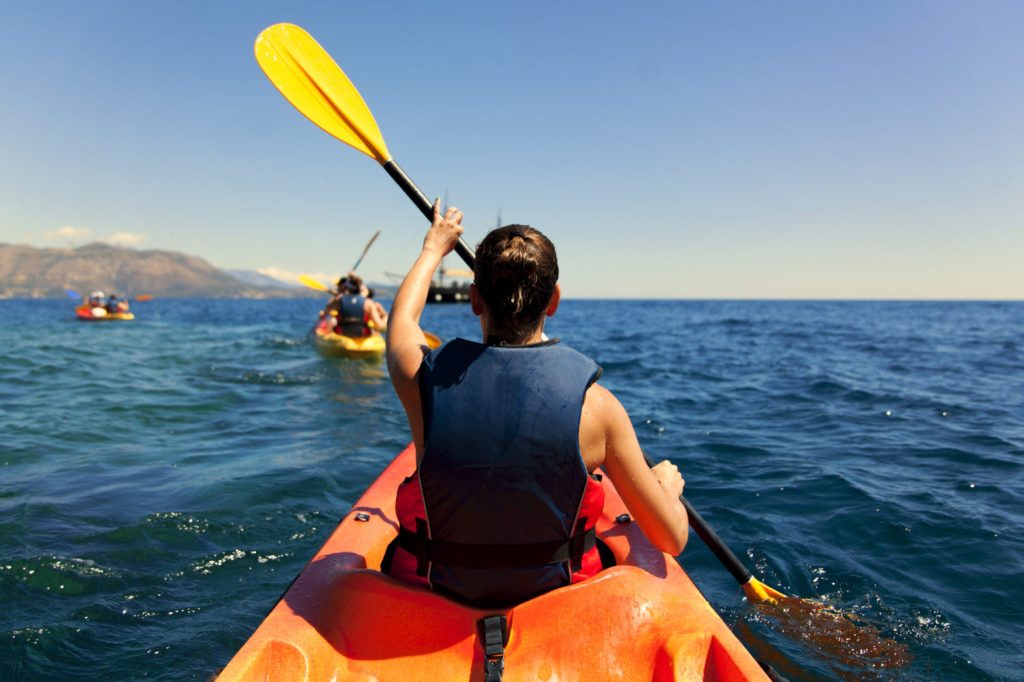
Ocean Kayaking Safety Tips
Safety should always be a top priority when venturing out on the ocean in a kayak. Wearing a personal flotation device (PFD) is essential to ensure your safety in case of capsizing or other accidents. Choose a well-fitted PFD that allows for freedom of movement and ensures buoyancy.
Practicing self-rescue techniques is also important for your safety on the water. Learn how to re-enter your kayak from the water and practice this skill in a controlled environment. Be prepared for potential capsizing and practice staying calm and focused during such situations.
Avoiding dangerous areas is another key safety tip when ocean kayaking. Stay away from areas with strong currents, heavy boat traffic, or hazardous underwater obstacles. It is also advisable to avoid paddling in extreme weather conditions or during times of poor visibility.
Paddling with a buddy is highly recommended for safety reasons. Having another kayaker with you provides an extra level of security and ensures that assistance is readily available if needed. It also allows for shared experiences and provides an opportunity for camaraderie throughout your ocean kayaking adventure.
Discovering Marine Life
One of the most exciting aspects of ocean kayaking is the opportunity to discover and observe marine life. Depending on your location, you may encounter a variety of marine species, from playful dolphins to majestic sea turtles and stunning schools of colorful fish.
To optimize your marine life observations, it is important to be respectful and mindful of the wildlife. Maintain a safe distance from marine animals and avoid causing unnecessary disturbances. Use binoculars or a camera with a zoom lens for a closer look, rather than attempting to approach marine life too closely.
If you wish to photograph marine life, there are a few tips to keep in mind. Make sure your camera is properly protected from water damage by using a waterproof case or housing. Learn about the behavior of the marine species you wish to photograph, as this will help you anticipate their movements and capture the best shots.
Minimizing disturbance to wildlife is of utmost importance. Avoid touching or feeding marine animals, as this can disrupt their natural behaviors and lead to negative impacts. Take only photographs and memories, leaving nothing but footprints behind.
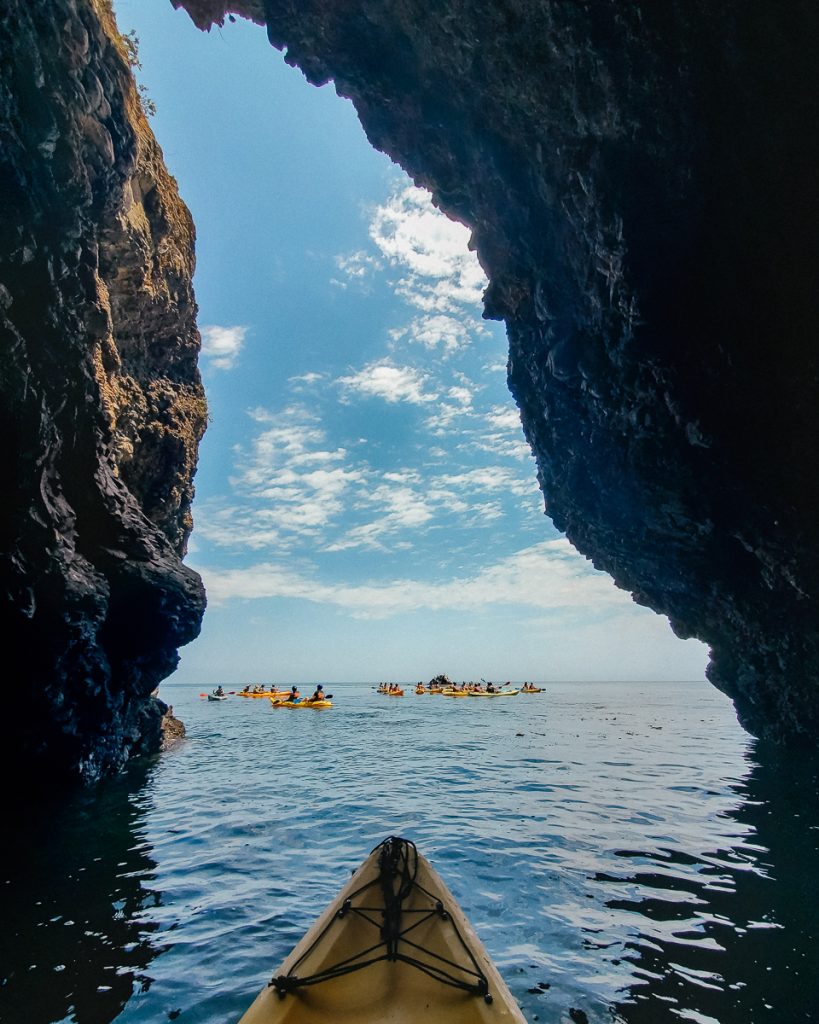
Exploring Coral Reefs
Coral reefs are breathtaking underwater ecosystems that teem with life and vibrant colors. If your ocean kayaking adventure takes you near coral reefs, it is important to understand their fragility and the potential impacts of human interaction.
Before exploring coral reefs, familiarize yourself with their ecosystems. Learn about the different coral species, fish, and other organisms that inhabit coral reefs. This knowledge will enhance your appreciation for their beauty and enable you to make informed decisions while exploring.
If you plan on snorkeling or diving to get a closer look at the coral reefs, ensure you have the proper gear. A well-fitted mask and snorkel or a dive mask and regulator will allow you to explore the underwater world more comfortably and safely. It is also advisable to wear exposure protection, such as a wetsuit or rash guard, to protect your skin from the sun and potential scrapes.
Responsible coral reef interaction is essential to preserve these delicate ecosystems. Avoid touching, standing on, or bumping into the coral, as this can cause irreparable damage. Instead, practice buoyancy control and swim above the reefs, taking care not to disturb the marine life or their habitats.
Coral reefs face numerous threats, including climate change, pollution, and overfishing. As a responsible ocean kayaker, it is important to be mindful of these threats and do your part in protecting coral reefs. Avoid using harmful sunscreens that contain chemicals harmful to coral, and report any instances of damage or illegal activities to the appropriate authorities.
Camping on Remote Islands
For those seeking a truly immersive ocean kayaking adventure, camping on remote islands can be a memorable experience. However, proper planning and preparation are key to ensure a safe and enjoyable camping experience.
Finding suitable camping spots on remote islands requires careful consideration. Look for areas that are flat, sheltered from wind and waves, and away from fragile ecosystems. Take note of any restrictions or permits required for camping on these islands and follow Leave No Trace principles to minimize your impact on the environment.
Packing essential camping gear is vital for a comfortable overnight stay. This includes a waterproof tent, a sleeping bag suitable for the temperature, and a sleeping pad for added comfort. Additionally, bring cooking equipment, such as a camping stove and utensils, as well as food that can be easily prepared and stored.
Preparing and storing food properly is crucial to prevent wildlife encounters and maintain a clean campsite. Store food securely in waterproof containers or bear-resistant bags and hang them away from your campsite to minimize the risk of attracting animals. Dispose of any food waste properly, following local regulations to avoid any negative impacts on the environment.
Following Leave No Trace principles ensures that your camping experience does not negatively impact the environment. Leave the island as you found it, taking care to pack out all trash and leaving natural and cultural artifacts undisturbed. Preserve the beauty and solitude of these remote islands for others to enjoy.
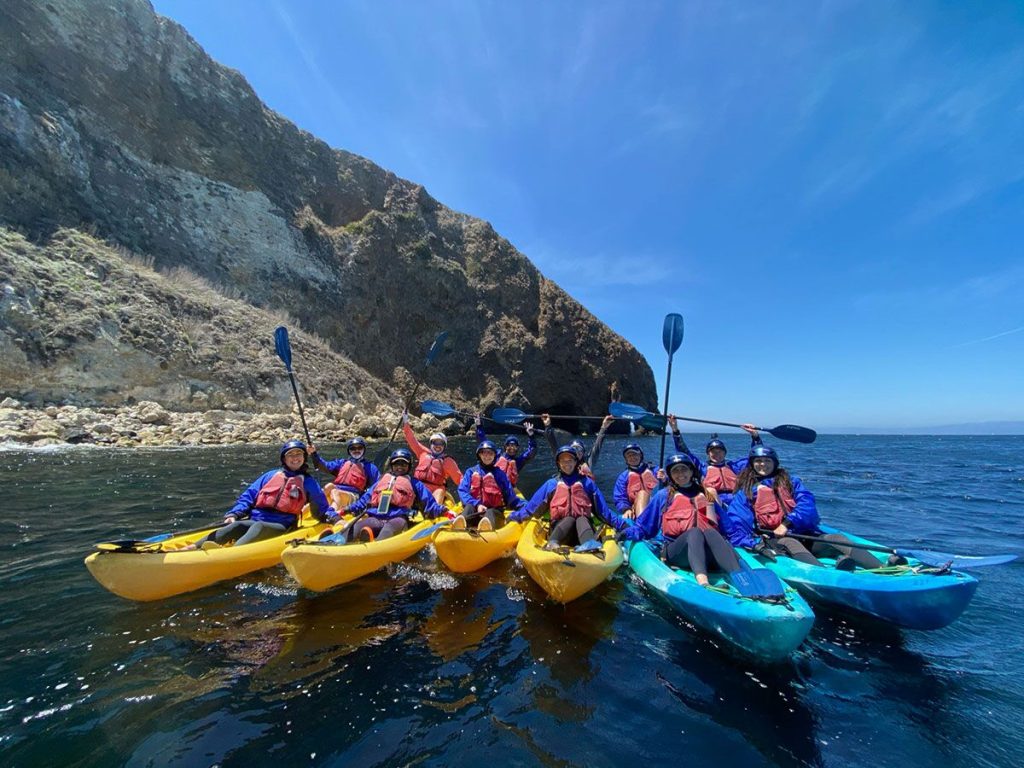
Dealing with Emergencies
While proper preparation and safety measures can minimize the risk of emergencies, it is essential to be prepared for unexpected situations. Having the knowledge and equipment to handle emergencies can make a significant difference in your ability to stay safe during your ocean kayaking adventure.
First aid skills are invaluable in any emergency situation. Familiarize yourself with basic first aid techniques, such as treating wounds, immobilizing fractures, and providing CPR. Carry a well-stocked first aid kit that includes supplies for common emergencies, such as bandages, antiseptics, and pain relievers.
Emergency signaling can be a lifeline when in need of assistance. Carry a whistle or marine radio that can be used to signal for help if you become stranded or encounter a serious situation. Practice using these signaling devices so that you are confident and familiar with their operation.
Handling equipment malfunctions is another potential emergency situation. Familiarize yourself with the various parts of your kayak and paddle so that you can troubleshoot common mechanical issues. Carry basic repair tools, such as spare paddle clips, ropes, and duct tape, to fix minor equipment problems.
Rescue procedures are essential knowledge for any ocean kayaker. Learn how to perform self-rescue techniques, such as re-entering your kayak from the water or performing a T-rescue, which involves helping another kayaker back into their kayak. Understanding these procedures can greatly increase your chances of staying safe in an emergency situation.
Post-Adventure Reflection
After completing your ultimate kayak adventure, taking the time to reflect on your journey is a valuable process. Documenting your journey through photographs, journals, or videos allows you to preserve the memories and share them with others.
Sharing your experience with others can be a great way to inspire and educate fellow ocean enthusiasts. Consider writing a blog post, creating a social media post, or giving a presentation about your adventure. By sharing your insights and lessons learned, you can contribute to the wider kayaking and outdoor community.
Reflecting on the lessons learned throughout your adventure is an important step in personal growth. Take note of any challenges you encountered, how you overcame them, and what you have learned about yourself. Use these experiences to inform your future adventures and continue to develop your skills and knowledge.
Planning for future adventures is an exciting part of post-adventure reflection. Whether it’s exploring a new oceanic region or tackling a different kayaking challenge, start envisioning your next adventure. Set new goals, research potential destinations, and continue to expand your horizons as an ocean kayaker.
Embarking on the ultimate kayak adventure is a thrilling experience that opens up a world of exploration and discovery. By choosing the right kayak, equipping yourself with essential gear, and preparing adequately, you can ensure a safe and enjoyable journey. Remember to always prioritize safety, respect the marine environment, and have fun as you navigate the ocean and create lifelong memories.

